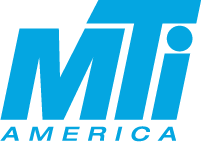The Rise of Captives


by Nikki Jackson, MBA, CPCU, ARM, CDMS
INTRODUCTION
Workers’ compensation captives can be used by a wide range of employers, from small businesses to large corporations. However, captives are typically used by companies that have a significant workers’ compensation exposure and a strong financial position to support the capital requirements of the captive. In recent news, “amid a historically hard construction market, middle and large-sized companies looking for alternatives to traditional insurance may turn to captives to find stable pricing and greater capacity” (Amacher, 2023).
WHICH EMPLOYERS USE CAPTIVES?
Here are some examples of employers that may use workers compensation captives:
Large corporations: Large corporations with significant workers’ compensation exposure may use captives as a means of managing their insurance program. These companies may have the financial resources and risk management expertise necessary to set up and manage a captive effectively.
High-risk industries: Industries with high levels of workplace injuries, such as construction, manufacturing, and healthcare, may use captives to manage their workers’ compensation risks. Captives can provide greater control and customization of the insurance program to meet the specific needs of these industries.
Public entities: Government agencies and other public entities may use captives to manage their workers’ compensation risks. Captives can provide greater control and customization of the insurance program, which can be particularly important for public entities with unique risk exposures.
Self-insured groups: Self-insured groups, which are groups of employers that come together to self-insure their workers’ compensation risks, may use captives as a means of managing their insurance program. Captives can provide greater control and customization of the insurance program for these groups.
WHAT ARE CAPTIVES?
An insurance captive in workers’ compensation is a type of self-insurance arrangement in which a group of companies come together to create their own insurance company to provide coverage for their own workers’ compensation claims.
Rather than purchasing insurance from a traditional insurance carrier, these companies form a captive insurance company to assume the financial risk of their own workers’ compensation claims. The members of the captive share in the financial benefits and risks of the program, and the captive is often managed by a board of directors elected by its members.
PROS
Captive insurance can offer several benefits to companies, such as more control over their insurance program, potential cost savings, and the ability to tailor coverage to their specific needs.
- Cost savings: Workers’ compensation insurance premiums can be expensive for companies, and traditional insurance policies may not always provide adequate coverage. Captives can potentially offer cost savings for companies by providing more control over the insurance program, reducing administrative costs, and allowing for greater flexibility in coverage and risk management strategies.
- Customization: Captives allow companies to design their insurance program to fit their specific needs, including customizing coverage and risk management strategies. This can help companies better manage their workers’ compensation risks and potentially reduce claims costs.
- Improved cash flow: Captives allow companies to retain their insurance premiums within the captive, rather than paying them to a third-party insurance carrier. This can improve cash flow for the company and potentially provide investment income.
- Stability and predictability: Captives can provide greater stability and predictability for a company’s workers’ compensation insurance program. Companies have more control over their insurance program and can potentially reduce volatility in their insurance costs.
- Access to data and analytics: Captives can provide companies with greater access to data and analytics on their workers’ compensation claims. This can help companies better understand their claims experience, identify areas for improvement, and implement targeted risk management strategies.
CONS
Captive insurance requires significant financial resources and expertise to set up and manage, so it may not be the best option for every company.
- Upfront costs: Setting up a captive can be expensive and time-consuming. Companies need to have a significant amount of capital available to form a captive and cover the associated costs of managing it.
- Risk retention: With a captive, the company assumes more risk than they would with a traditional insurance policy. If claims are higher than anticipated, the company may need to pay out of pocket to cover the costs.
- Limited liquidity: Unlike a traditional insurance policy, a captive may not be as liquid. This means that if a company needs to access funds quickly, they may not be able to do so through their captive.
- Regulatory requirements: Captives are subject to regulatory requirements and must comply with various laws and regulations. This can add an additional layer of complexity and cost to managing a captive.
- Management expertise: Captives require specialized expertise to manage effectively. Companies that do not have the necessary expertise in-house may need to hire outside consultants or firms to assist with management, which can be costly.
ABOUT US
At MTI America, we are proud to support employers that use or are considering workers’ compensation captives. Founded in 1992, MTI has been a trusted partner in the workers’ compensation industry delivering a broad range of post-acute network health solutions to injured employees. Since its inception, our company’s guiding principles of delivering compassionate care and better health for everyone consistently result in superior medical and financial outcomes for those we serve. Our innovative spirit was recognized over 30 years ago as the original pioneer of transport & translation services and continues today as our diagnostic, physical medicine, home health, DME & medical supplies are built on best-in-class connected care models, experienced people, and a unified MTI360 platform.
REFERENCES
Amacher, E. (2023). Hardening Construction Market Gives Way to Rise of Captives. Insurance Journal. https://doi.org/https://www.insurancejournal.com/news/southcentral/2023
Cantley, Beckett and Dietrich, Geoffrey, FAQs: Captive Insurance Companies (October 8, 2020). Available at SSRN: https://ssrn.com/abstract=3707594
Deng, S. (2021). Regulation of Captives in the Face of Global Domiciles’ Competition: Challenges and Perspectives. Geo. Mason Int’l LJ, 12, 1.











